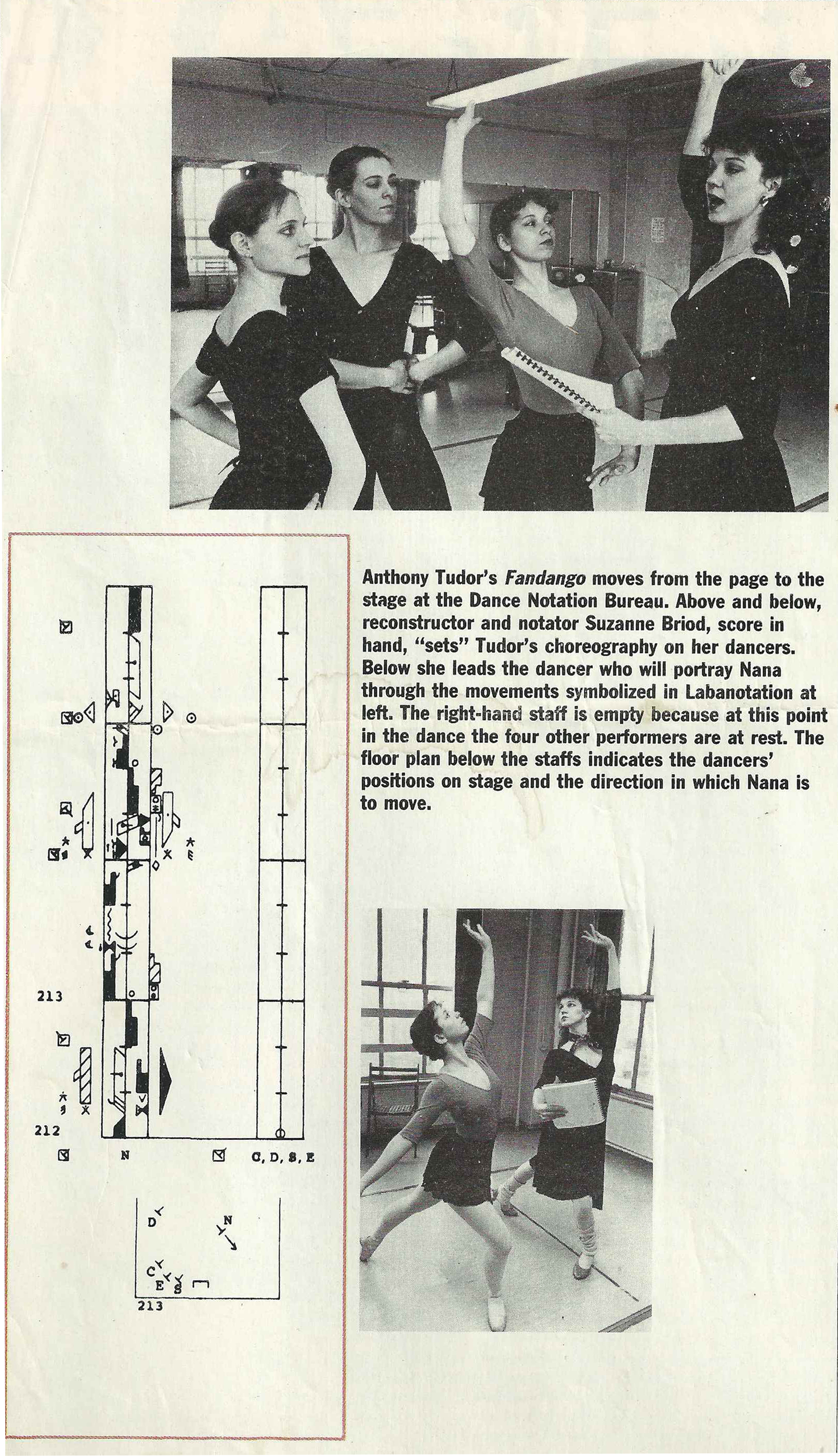Labanotation is a symbolic language for recording human motion much as notes are a symbolic language for recording music.
The Labanotation system was developed by dance theorist Rudolph Laban in 1928 and has been in use since then as a method for recording dance repertory. There are other dance notation languages but Labanotation has been preferred by the Dance Notation Bureau in New York City because of its accuracy and precision.
Until the advent of dance notation, dance repertory was passed by memory, from dancer (or choreographer or director) to dancer. As a result many great dance works of the past have been altered beyond recognition, or completely lost. Film and videotape can record a single performance with all its imperfections, but a notated score contains the choreographer’s original intent. In a similar manner, a music recording is not an ideal substitute for a notated music score.
Labanotated scores make it possible for a small or remotely located dance company to obtain recognized works for their repertory at reasonable cost. Rehearsal time is reduced, since time is not wasted debating specifics such as on which foot a leap begins. Also with thousands of works now notated, a dance student or researcher can have access to a variety of choreography simply by “reading” dance scores.
For more information on Labanotation please visit Dance Notation Bureau Website
